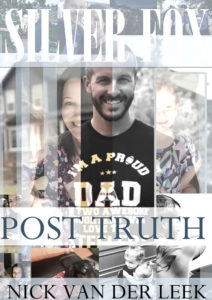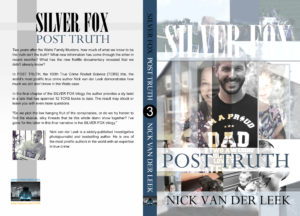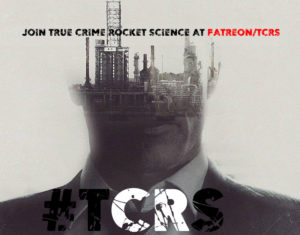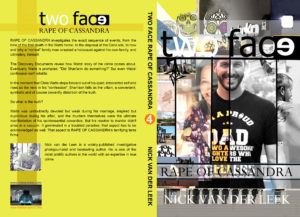
“…British journalist Nick Pisa says in the documentary Amanda Knox…”
When it first alerted on my radar that Gladwell had referenced Amanda Knox in a chapter in his book, I was surprised and even happy. I was looking forward to a decent airing of her narrative by a professional writer and researcher, and a well-respected writer.
The pleasant surprise then took a turn to cautious disbelief as the media recycled Gladwell’s apparent belief that the current mainstream narrative – regarding Knox – is beyond reproach. The current narrative, it has to be said, is a manufactured narrative, that is to say, a contrived and false narrative.
So for Gladwell to be mainlining it and endorsing it was disappointing, to say the least. Had he thin-sliced the narrative in error? It’s hard for me, a full-time true crime author to believe that Gladwell wasn’t aware of other dimensions to the media narrative. But if there was a clear indication of how deep Gladwell had ventured into the Classic Apologia, which is to say a manufactured contrivance, it was in Gladwell jumping on “Hate Nick Pisa” bandwagon.
I understand why this aspect to the narrative exists, and I also understand why even attempting to counter this aspect of the narrative plays into the hands of the Apologists. As soon as we shift the narrative to the villainous tabloid journalist, what do we do? We’re distracted from looking at the real villains in this story, the actual murder suspects and liars in this story.
What I want you, the listener to do, is write on a mental post it the word DISTRACTION. Everything we’re about to deal with is exactly that, but since we’re aware of it, we’re also aware that we’re going to come out the other side having debunked and dismissed these distractions as a kind of PR sleight of hand.
Worth playing for?
First, let’s begin by acknowledging Nick Pisa’s role in the Amanda Knox story.
















Is all this press coverage random, does the straw and chaff fall where it does innocently, with no predetermined pattern, or is the media narrative designed, and orchestrated?


End of Part 1 [Scroll to the bottom to watch Part 2]





What’s troubling about this is the intensity of the deceit. It’s one thing to drum up support by having friends and family talk about the ‘real’ Knox; it’s quite another to knowingly hawk appalling untruths and propagate them through the media. In the face of recent and important case developments, much of the U.S. media remains curiously silent.
In July, Knox’s connection to a Perugian cocaine ring was made public. According to police reports from 2008, Knox had a sexual relationship with a cocaine dealer and contacted him in the days before and after Kercher’s murder. In a case where sex and drug use are so contentious, one might imagine this was noteworthy, but the mainstream media in the U.S. were silent.
Considerable time, effort and money has gone into portraying Knox as a wholesome girl-next-door and Sollecito, a shy, well-behaved doctor’s son. Stories that threaten to shatter these carefully constructed PR images are just brushed under the carpet.
In a case that hinges on a staged burglary, how many U.S. publications reported on Knox’s own damning admission this year that she faked a break-in in Seattle months before leaving for Perugia? How many reported on her previous encounter with police — or Sollecito’s for that matter? How many dared to mention Sollecito’s obsession with knives, alleged encounters with bestiality porn or admiration for a serial killer? Members of Sollecito’s family recently stated on Italian TV that they think Knox may be guilty — key information that again was stifled in the U.S.
Source: HuffingtonPost UK
Is there any psychological mirroring between the PR following the murder, and PR of the crime scene? Staging in the media, covering up in the media is reflected in the staging of the crime scene, and the covering up of the crime scene.




“Other signature cases are just as enthralling…but the Amanda Knox case is not…”

“It is completely inexplicable in hindsight…”
No, it’s not completely inexplicable.

“There was never any physical evidence linking either Knox or her boyfriend to the crime…”
Holy hell, I think I just threw up in my mouth. Did I read that right? So what were all the years of trials and media coverage if there was zero linking not just Knox but her boyfriend to the crime scene? Why wasn’t the case simply dismissed in the first week of the first trial?
Let’s have a look at physical evidence ALLEGEDLY linking Knox and Sollecito to the crime.
- The Bra Clasp
- The Murder Weapon
- The bloody footprint
- The Nike shoeprints
- The second lamp on the floor
- Mixed DNA traces



Why are there two bedside reading lamps in Meredith’s bedroom, and not one in Knox’s bedroom?









What about digital traces? Browser history, cellphone data and computer activity.




“Nor was there ever a plausible explanation why Knox would be interested in engaging in a murderous sex game with a drifter whom she hardly knew…”
It wasn’t murderous to begin with. Something went awry.
Where did Rudy Guede live?

Gladwell describes Knox as immature, middle-class, sheltered, and “a girl from Seattle”…
Was this relevant to the murder of a mature, middle-class, urbane, sophisticated 22-year-old from London?











Leave a Reply